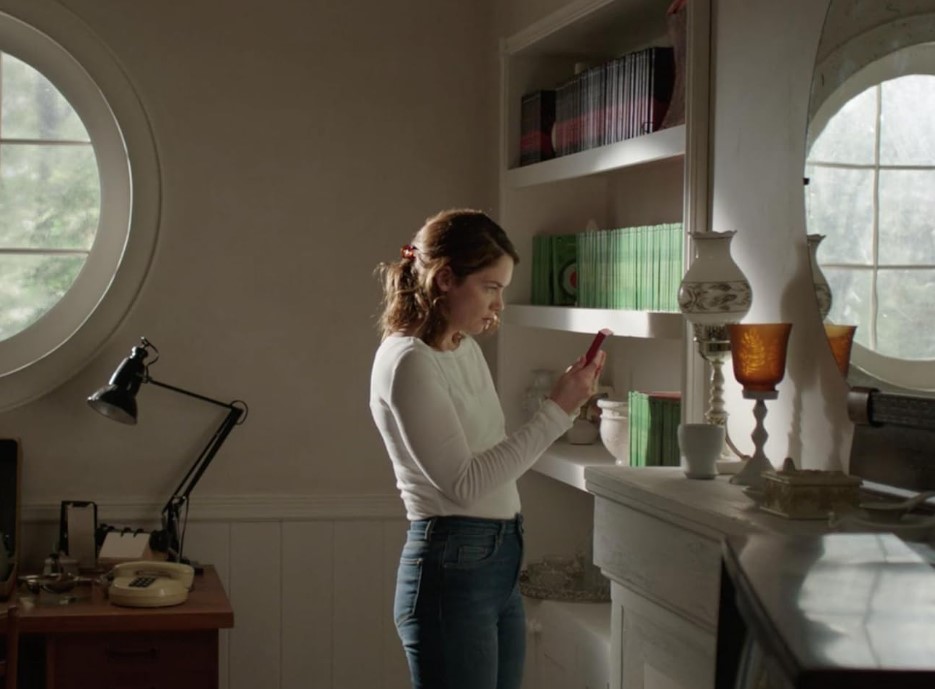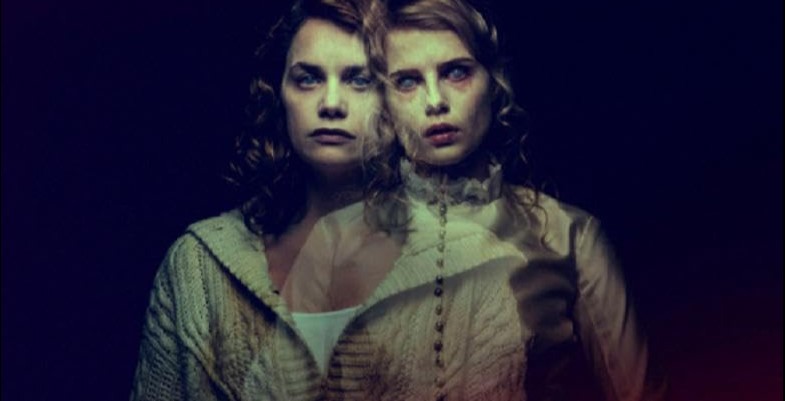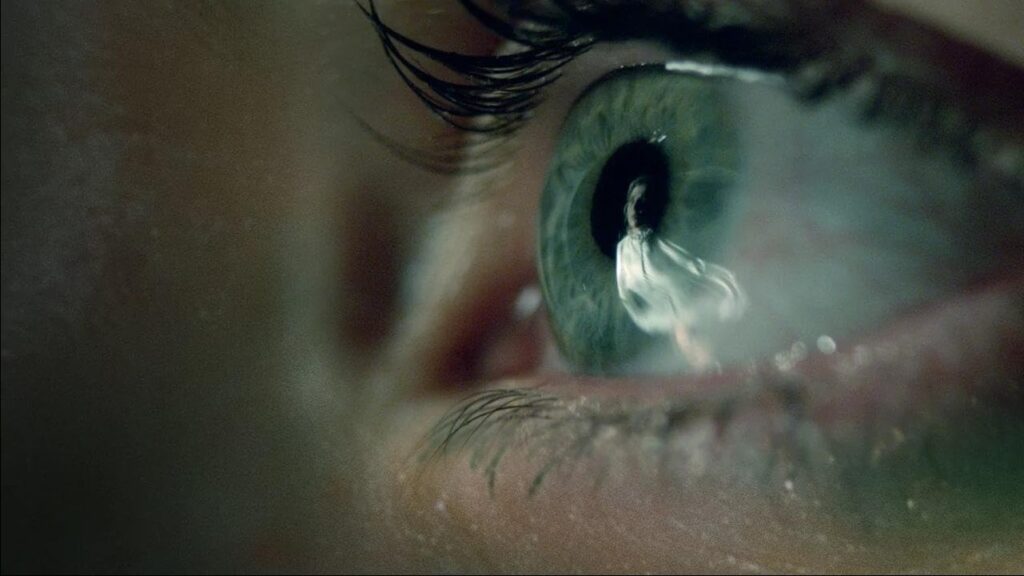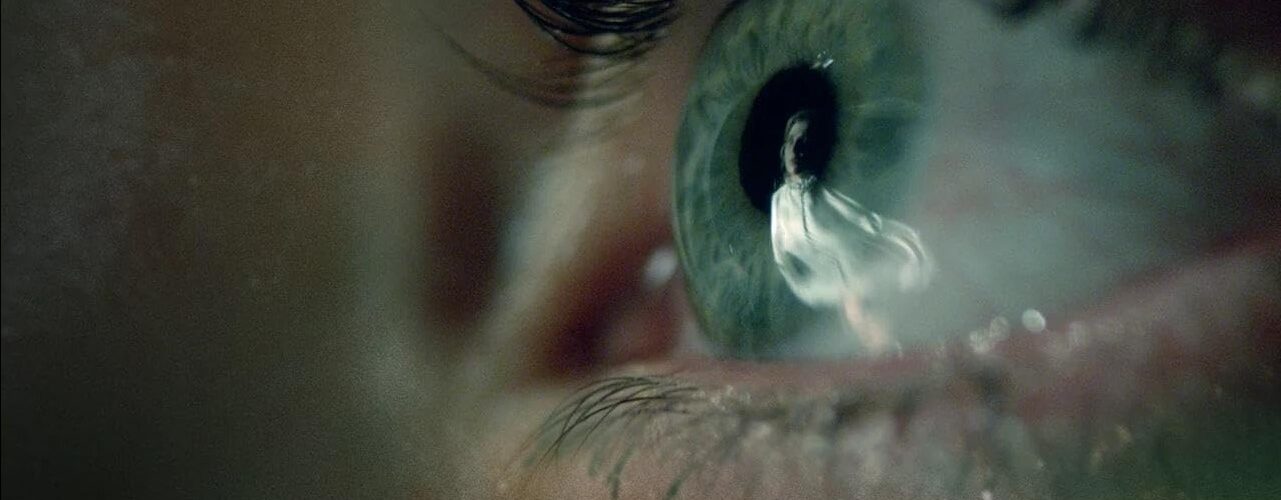
Welcome to Watching the Dark, a regular column featuring essays and articles about horror films. Written by Terry Morgan.
I Am the Pretty Thing That Lives in the House from Netflix
Quite Dead, But Not Quite Buried
This is the second piece of a three-part series on the work of writer/director Oz Perkins, leading up to the release of his new film, Longlegs, on July 12, 2024. The focus of this essay is his sophomore film, 2016’s I Am the Pretty Thing That Lives in the House, which is different from his previous film—released in 2017, The Blackcoat’s Daughter—and different from most other horror movies in a couple of ways. The first of these is that it’s meant to chill the blood more than be traditionally scary, trying through spectral atmosphere to make the audience feel what it might be like to be a ghost for ninety minutes. The second thing it does is that it isn’t really much about plot; it’s more akin to an art film tone poem than standard Hollywood horror fare. There are not a lot of spoilers that the film doesn’t dispense with itself early on, but I’ll use them to try and give any newcomers to the film the best experience.
Lily Saylor (Ruth Wilson), a young woman, has been hired as a live-in nurse in the home of elderly Iris Blum (Paula Prentiss), a best-selling horror writer who now has dementia. Although she works with Iris for months, the older lady always calls her Polly, which confuses Lily but she takes as part of her patient’s illness. As Lily stays in the house, she becomes isolated from the outside world and quickly begins to notice odd noises in the night and mold growing on one wall. She learns that one of Iris’ novels was The Lady in the Walls, which she claimed was a story told to her by the ghost in her home. Lily feels drawn to investigate the truth of the matter, an issue that is “quite dead, but not quite buried.”
Wilson alters her usually strong and forceful persona to play the somewhat passive and frightened Lily very effectively. It’s more impressive that she does this with very little dialogue to aid her, and most of that is narration. Prentiss plays Iris with an air of vague anger – she’s aware enough to be annoyed that she can’t remember or do things as well as she used to – a figurative ghost of who she used to be. Bob Balaban is amusing as an unhelpful realtor, and Lucy Boynton (from Blackcoat’s Daughter) makes a short but memorable appearance.
Perkins’ direction in Blackcoat was already very much about long shots of empty corridors and paying attention to absence and silence, and Pretty Thing doubles down on that style which, for me, is one of its best qualities. It’s not so much a story about a haunted house as it is the experience of being in one, capturing not just the fear but also the sadness and haunted beauty. To this end, the title sequence, which combines a blurry white ghost walking backwards before it stops and looks straight at us, is a perfect indicator of the film to come. The sound design is quite eerie and very prominent, along with Elvis Perkins’ soundtrack, which is reduced here to echoey piano notes resounding in the house’s emptiness. The repeated use of the old-timey record, “You Keep Coming Back Like a Song,” is thematically appropriate and also spooky.

COMPLETE SPOILERS FOLLOW…………………………………………
Polly, played by Boynton, is the ghost of a newlywed who was murdered by her husband on their first day in the new house, her body shoved into the wall and covered up by boards. She doesn’t know how she died, and she remains, “worrying over the floors in confused circles, tending to [her death] like a patchy, withered garden.” At the end of the film, Lily finally sees Polly, and in her terror she suffers a heart attack and dies. Lily resembles Eleanor in Shirley Jackson’s The Haunting of Hill House, except that she’s an even more hapless victim. In both stories, however, the focus is about how a place becomes haunted, about how the tenuous living become the immutable dead. Perkins makes this pretty clear from the get-go; Lily is narrating with a scratchy audio filter at the beginning, calmly discussing ghosts, and finally says: “Three days ago I turned twenty-eight years old. I will never be twenty-nine years old.”
Perkins’ screenplay is replete with great lines, such as Polly referring to how she both came into and exited out of the world – “I am wearing nothing but blood.” He plays with foreshadowing as Lily comments early on, “I’m gonna give myself a heart attack.” One of the focuses of Perkins’ story is that Lily seems almost dead before she actually dies, a person so already removed from life that it seems appropriate when Polly whispers to her, “This is how you rot.” And yet, at the end, Lily doesn’t seem upset at her fate. She is now the pretty thing that lives in the house, watching over instead of terrorizing the new family that lives there.
Some miscellaneous stuff. The film is dedicated to “A.P., who gave me an old house.” A.P. is Anthony Perkins, the writer/director’s father, and he has a cameo of sorts in this film, when a clip of his old movie Friendly Persuasion is shown on a tv. Iris Blum, the horror author character, owns the house, which makes it a “Blum house,” a pun on horror film production company Blumhouse.
I like this film and its ambition to do something different, but it isn’t entirely successful. The ending feels abrupt and not as frightening as one might have hoped. Polly and Lily’s motivations seem somewhat unclear. But Pretty Thing is clearly the product of an original thinker who knows the horror genre and has smart, stylish contributions to make.








